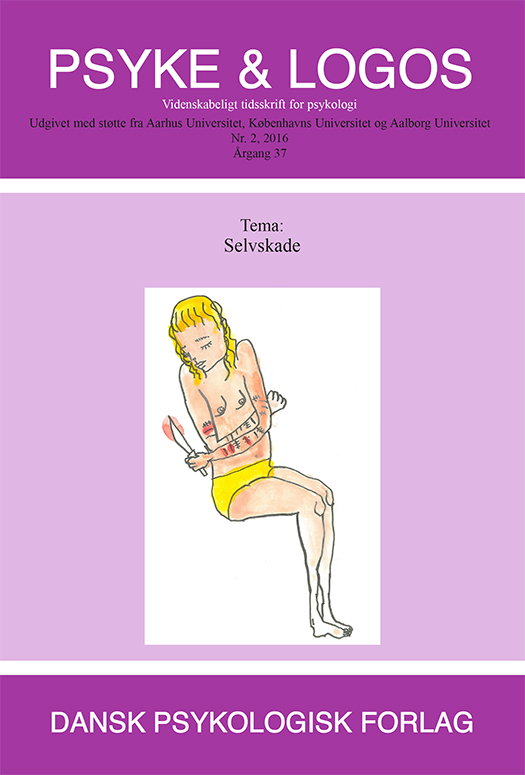Fra selvskade til selvmord
DOI:
https://doi.org/10.7146/pl.v37i2.25682Resumé
Non-suicidal self-injury (NSSI) and suicidal behavior can be viewed as two dimensions of self-harming behavior which differentiate in intention, frequency and mortality. In this review, we present different theoretical models which explain the link between NSSI and suicidal behavior. Furthermore, we review empirical findings regarding NSSI as a risk factor of suicidal behavior. The review indicates that NSSI is a strong and unique predictor of suicidal behavior and that NSSI is a better predictor of suicidal behavior than suicide ideation. Paradoxically, NSSI also seems to protect against later suicide behavior. Identification of self-injuring people at risk of later suicide may contribute to existing prevention interventions. According to the integrated model by Hamza and colleagues, perceived burdensomeness, thwarted belongingness and acquired capacity to hurt one-self may influence whether NSSI leads to suicide. However, existing studies have reported mixed findings which is why more longitudinal studies of the integrated model are needed.
Downloads
Publiceret
Citation/Eksport
Nummer
Sektion
Licens
Ophavsret er tidsskriftets og forfatternes. Det er gældende praksis, at artikler publiceret i Psyke & Logos, som efterfølgende oversættes til andet sprog, af forfatteren frit kan publiceres i internationale tidsskrifter, dog således at det ved reference fremgår, at den oversatte artikel har et forlæg i en dansksproget version i Psyke & Logos. Artikler kan frit deles og linkes til på forsknings- og undervisningsnetværk (så som Blackboard). Link foretrækkes, fordi det giver oplysning om brug af tidsskriftets artikler.




